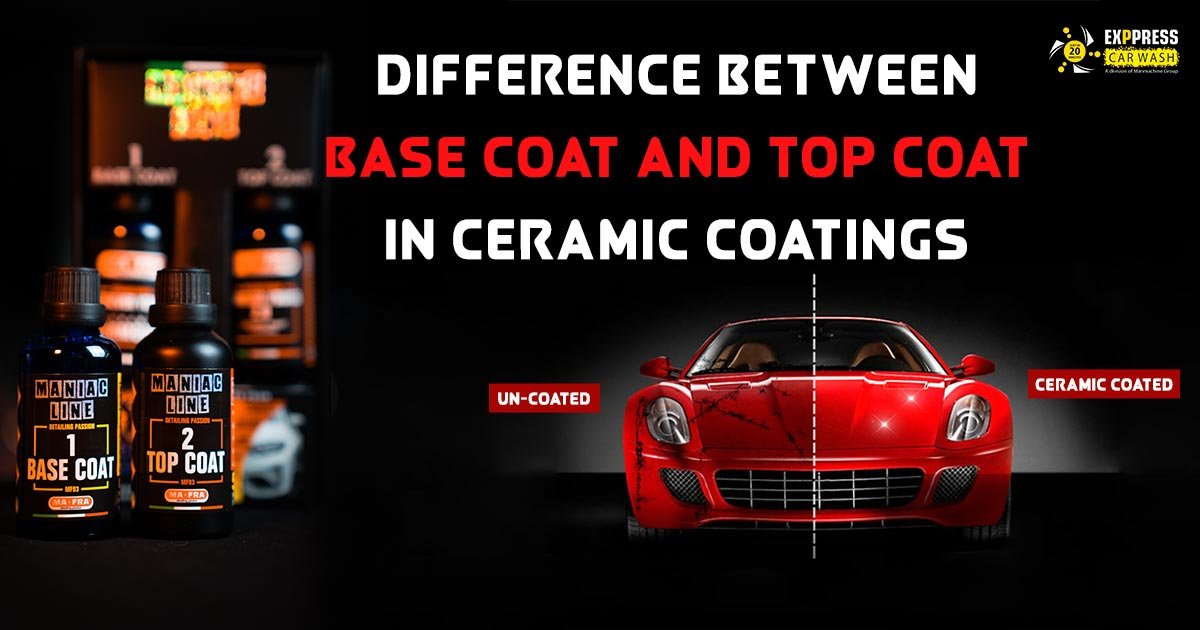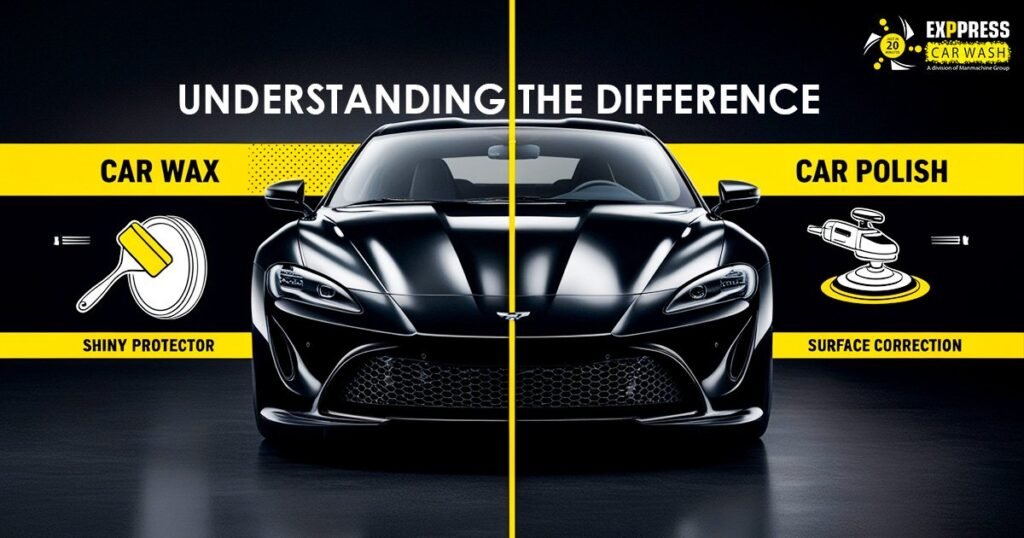Difference between Base Coat and Top Coat in Ceramic Coatings

Exppress Car Wash is India’s leading car wash and detailing company. We offer a complete range of car care solutions. With over a decade of experience with our franchise network across PAN India. We help all car owners and entrepreneurs to deliver high-quality results and services.
Introduction
The ceramic coatings have transformed car detailing, providing long-lasting protection for the aesthetic look of vehicles. This composition understands its application process of ceramic coatings and it can help car owners make informed decisions about vehicles. In this blog post, we will research the differences between the base coat and ceramic coatings, by focusing on their properties processes.
Definition of Ceramic Coating
The Industry-grade ceramic coating is a chemical polymer solution which is applied to the exterior parts of the vehicle and protects external parts of the vehicle from damage. It is typically applied by hand and blends with the paint of your car creating hydrophobic protection.
A car detailing franchise allows entrepreneurs to enter the automotive service industry with the support of a proven brand. Franchisees benefit from expert training, access to high-quality products, and operational support, enabling them to offer premium services like paint correction and interior restoration. This business model reduces startup risks and helps build customer loyalty, making it an ideal choice for those passionate about vehicle care.
Moreover, it is a liquid that is applied to the exterior of a vehicle to protect and acts as a protective layer, shielding the paint from environmental factors such as UV rays, dirt, and grime. It is known for its durability and hydrophobic properties making it a preferable choice for car lovers and making them an ideal choice for car enthusiasts looking to maintain the natural look of your vehicles.
Purpose of Ceramic Coating
Initially, the ceramic coating protects your vehicle from physical wear by preventing dirt, dust, rust, road grime, and other environmental contaminants. It creates a protective barrier between your car’s paint and the elements, preventing damage from environmental factors like bird droppings or tree sap. The primary purpose of ceramic coating is to protect the vehicle’s paintwork from fading, oxidation, and other forms of damage. In addition, ceramic coatings provide a glossy finish that enhances the vehicle’s appearance. By forming a protective layer on the paint surface, ceramic coatings also make it easier to clean the car, as dirt and grime are less likely to adhere to the surface.
Understanding Ceramic Coating Layers
When applied correctly to a car’s paint, a ceramic coat layer can provide complete coverage in just two coats. Two ceramic coating layers plus a top coat layer are usually required. To maximize the hydrophobic properties of the ceramic coating, multiple layers are needed. Ceramic coatings consist of two main layers- the base coat and the top coat. The layer serves is more specific purpose and contributes to the efficacy of the ceramic coating.
Base Coat Explained
The Base Coat is the foundation coat that has a high % of Silicon Dioxide (SiO2) and bonds with the surface. It creates a semi-permanent layer of protection that helps protect the paint against minor scratches, UV rays, and chemical stains. This product is of higher quality and most prolific behind its efficiency for the cleaning process of your vehicle. The science has explained the properties of this product that have created a scenic foundation foundation of the ceramic coating system.
Furthermore, it is responsible for bonding to the vehicle’s paint surface and providing a durable foundation for the top coat. The base coat is formulated to penetrate the microscopic pores of the paint surface, creating a strong bond that enhances the coating’s durability.
Composition and Characteristics
The basic chemical composition of a ceramic coating is Silicon Dioxide (SiO2) is referred to as quartz coating. This can be expensive, but this can be balanced out by the fact it adds value to your car. The base coat is typically made from a blend of ceramic nanoparticles, resins, and solvents. These ingredients work together to create a strong, durable layer that bonds to the paint surface. The base coat is designed to be highly resistant to environmental factors such as UV rays, chemicals, and abrasion, ensuring long-lasting protection for the vehicle’s paintwork.
Application Process
The process of doing certain activities of applying the ceramic coating for car cleaning services for the specific application. Once you apply it it builds a strong layer that does not vanish easily and it also increases the appearance quality of ceramic coating.
Similarly, the base coat is applied to the vehicle’s paint surface using a process that involves cleaning and preparing the surface, applying the coating evenly, and allowing it to cure. The curing process can take several hours, depending on the specific product used. Once cured, the base coat forms a strong bond with the paint surface, providing a solid foundation for the top coat.
Grab your ceramic coating bottle, a brand new (Low GSM) microfiber towel, and the applicator pad. first, prime your applicator pad by applying 8 drops of ceramic. Work the product in the paint using either circular motion or in a cross-hatch pattern. Work in a 3×3 area without repeating the passes more than twice
Top Coat Explained
This is the liquid polymer that applies to exterior parts of the vehicle to protect the paint from damaging space and the quality of the vehicle. It forms a strong bond with the vehicle’s paint, providing a layer of protection that is resistant to UV rays, chemical stains, and water and the final layer of the ceramic coating system. It is designed to enhance the duration of the properties of the coating. In addition, it protects against environmental factors and the top coat also gives the coating its glossy finish and the vehicle’s appearance.
Composition and Characteristics
The basic compos


